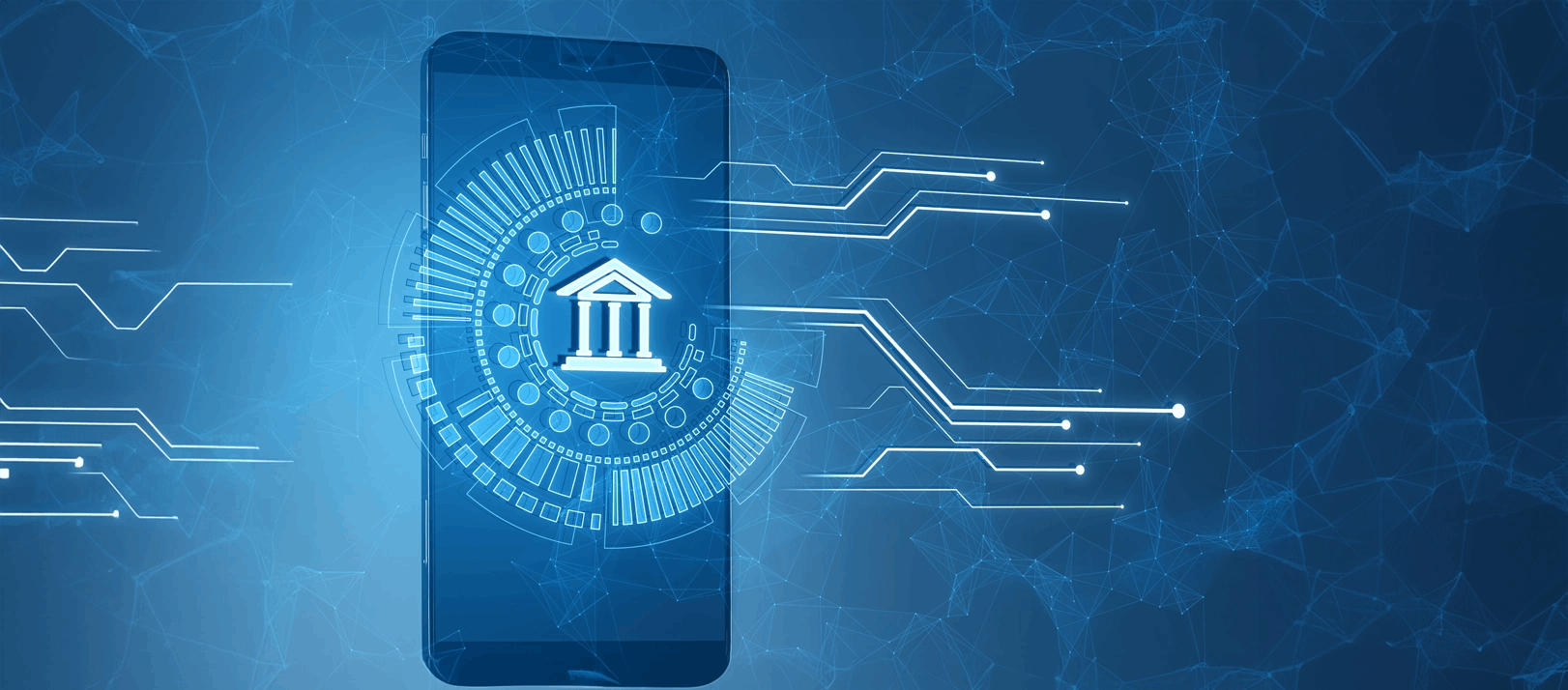
,
TL;DR
- Neobank 3.0 represents intelligence-first banking where AI drives core operations, not just customer service
- AI changes how banks and customers handle risk, follow the rules, and have a good experience.
- Embedded finance, alternative credit markets, and real-time financial products are some of the new options.
- Some of the problems are complicated rules, worries about privacy, and high infrastructure costs.
- Conversational banking, invisible security, and tailored financial coaching all make the customer experience better.
- AI-native architectures, vertical specialization, and embedded financial services are all things that will likely happen in the future.
- AI advances will mostly propel the neobanking market to $1,228.17 billion by 2029.
Introduction
Neobank 3.0 is here, and it's not like anything you've seen before. As traditional banks rush to become digital and first-generation neobanks fight for market share, the next wave of AI-first neobanks is quietly altering the rules of the game.
The global neobanking market is predicted to reach $1,228.17 billion by 2029 at 47.1%. But here's what most people don't see: we're not just witnessing development in digital banking; we're also seeing the rise of truly smart financial platforms.
What's the difference? Neobank 3.0 doesn't only digitize banking services; it uses AI in fintech to forecast, customize, and automate them in ways that make both regular banks and early neobanks look old-fashioned.
What Is Neobank 3.0 and How Does It Differ from Previous Generations?
Without the marketing jargon, let's dissect the evolution.
- Neobank 1.0: The goal of Neobank 1.0 (2010–2016) was to prioritize digitalization. Apps took the place of branches for businesses like Simple and Atom Bank. The value offer was straightforward: mobile-centric design, reduced pricing, and improved user experience.
- Neobank 2.0: In Neobank 2.0 (2016–2023), ecosystem thinking was introduced. Financial super-apps such as Revolut and N26 now provide everything from bitcoin trading to currency exchange. They brought all of the financial services together in one location.
- Neobank 3.0: From (2023-present) is fundamentally different. It's about intelligence-first architecture where AI in banking isn't a feature it's the foundation. These platforms don't just offer services; they anticipate needs, prevent problems, and optimize outcomes in real-time.
Key differentiators of Neobank 3.0:
- Financial health management that is predictive rather than reactive
- Automated risk assessment and compliance
- Highly customized product suggestions
- Behavioral analysis for fraud prevention in real time
- Intelligent cash flow optimization for businesses
- AI-driven credit scoring using alternative data sources
The technology stack is completely different, too. Neobank 3.0 constructs AI-native architectures from the ground up, whereas Neobank platforms developed APIs on top of conventional banking infrastructure.
How AI Transforms Digital Banking for Banks and Customers
AI in digital banking is good for both sides, but let's talk about real benefits instead of just ideas.
For Banks:
- Risk Management Revolution: Traditional credit scoring relies on historical data. AI-driven neobank platforms look at hundreds of data points, such as spending habits, social media activity, device usage, and more, to determine creditworthiness in real time. This lowers the number of defaults by 15% to 25% and gives credit to consumers who were previously "unbankable."
- Operational Efficiency: AI-powered compliance tools take care of regulatory needs on their own. Without any help from people, document verification, KYC processing, and transaction monitoring all happen. This cuts expenditures by 30–40% compared to regular banks.
- Revenue Optimization: AI finds chances to cross-sell and upsell by looking at how customers act. The algorithm doesn't just offer random things; it suggests financial products at the exact time when customers are most likely to need them.
For Customers:
- Proactive Financial Management: Neo Banking vs Traditional Banks comparison shows a clear winner in customer experience. AI assistants can tell when you're going to run out of money, advise the best times to make big purchases, and automatically optimize your savings based on how you spend your money.
- Instant Everything: Loan approvals in minutes, not days. Account opening in seconds, not hours. Problem resolution through AI chatbots that actually understand context and can take action.
Personalized Banking Experience: The AI adjusts the entire banking interface based on your financial patterns. Frequent travelers see currency exchange rates prominently. Small business owners get cash flow insights. Students get budgeting tools and credit-building advice.
Want to discuss how AI could transform your fintech vision?
New Opportunities and Challenges AI Introduces for Neobanks
The AI neobank landscape creates unprecedented opportunities while introducing complex challenges that separate winners from losers.
Opportunities:
- Embedded Finance at Scale: AI-Powered Neobanks can offer banking services inside any application or platform. Your ride-sharing app becomes a payment processor. Your accounting software becomes a lending platform. AI handles the complexity of integrating financial services seamlessly.
- Alternative Credit Markets: With 394 million neobanking users expected by 2024, AI enables serving customers that traditional banks reject. Small enterprises, independent contractors, and gig workers are granted credit based on cash flow trends rather than conventional work history.
- Real-Time Financial Products: AI makes it possible to use real-time risk assessment to offer dynamic pricing for investment, insurance, and loan products. Current financial activity, not static credit scores, determines interest rates.
Challenges:
- Regulatory Complexity: AI decision-making creates regulatory blind spots. How would you explain the denial of a loan application by an AI? Global expansion is complicated by the varying AI governance requirements of different nations.
- Data Privacy Concerns: AI customer engagement necessitates a large amount of data collection. Consumers are concerned about privacy yet adore personalization. Long-term success depends on finding this equilibrium.
- Technology Infrastructure Costs: To build AI-native banking platforms, you need to spend a lot of money up front on data science experts, cloud infrastructure, and systems to make sure you follow the rules. Many startups underestimate these costs.
Customer Experience Improvements with AI in Fintech
AI neo-banking transforms customer experience in ways that traditional metrics don't capture. Here's what actually changes for users:
- Conversational Banking: Consumers simply express their needs in plain English, eliminating the need for menus and paperwork. Saying, "I need to save for a house down payment," opens up personalized savings plans, investment recommendations, and time-saving strategies.
- Invisible Security: AI watches transactions, device use, and patterns of behavior to stop fraud without getting in the way of real activities. No more declined cards during travel or complex authentication processes for routine transactions.
- Financial Coaching at Scale: Every customer gets personalized financial advice previously available only to wealth management clients. AI analyzes spending patterns, identifies optimization opportunities, and provides actionable recommendations.
- Business Intelligence for SMEs: Business accounts lead the neobank market with 68.7% of market share in 2024. Neobanks and Fintech Startups focusing on SME customers use AI to provide cash flow forecasting, expense categorization, tax optimization, and growth financing recommendations.
- Predictive Problem Resolution: The system identifies potential issues before they impact customers. Low balance alerts become cash flow optimization suggestions. Suspected fraud becomes proactive security measures. Upcoming bill payments become automated cash management.
Future Trends in Neobanking That Businesses Should Know
The Digital Banking in Fintech landscape is evolving rapidly. Here are the trends shaping the next five years:
- AI-Native Architecture: New entrants won't retrofit AI onto existing platforms. They'll build intelligence-first architectures where AI handles everything from customer onboarding to regulatory compliance.
- Vertical-Specific Solutions: Generic neobanks will struggle against specialized solutions. Expect AI-powered neobanks focused specifically on healthcare providers, creative professionals, e-commerce businesses, and other niches.
- Regulatory Technology Integration: AI-powered compliance tools will become competitive advantages rather than compliance costs. Banks will work more quickly and effectively if they automate regulatory requirements.
- Cross-Border Financial Services: Banks will work more quickly and effectively if they automate regulatory requirements. Currency exchange, international payments, and cross-border lending will happen automatically based on customer needs.
- Embedded AI Financial Services: The global AI in FinTech market is expected to reach $51.08 billion by 2029 at 30.4%. Financial services will embed directly into business operations through AI-powered APIs. Your CRM will offer customer financing. Your inventory system will suggest working capital loans.
- Regional Innovation Hubs: Markets like UAE neobank development will drive global innovation. Government assistance and regulatory sandboxes establish testing grounds for AI banking advances that then spread around the world.
Ready to Explore AI-Powered Banking Solutions?
Not just another banking software, Neobank 3.0 seeks to create intelligent financial systems that anticipate customer demands and automate complex processes. In the next years, the businesses that comprehend this distinction will gain an outsized percentage of the industry.
The technology foundation matters more than you think. Most neobank platforms struggle with scalability because they have built digital interfaces on top of traditional banking infrastructure. AI in fintech requires purpose-built architectures designed for machine learning, real-time decisioning, and continuous optimization.
We assist fintech businesses in making AI-native banking solutions that don't just compete with regular banks; they change what banking means. If you're looking into Neobank 3.0 potential or designing your next fintech innovation, it's important to know the AI architecture needs early on to ensure long-term success.



Top Industries Benefiting from AI Voice Assistants in Customer Service
Know more
Building a Compliance-First Neobank: Tech Stack, AI Models, and Regulatory Architecture
Know more
